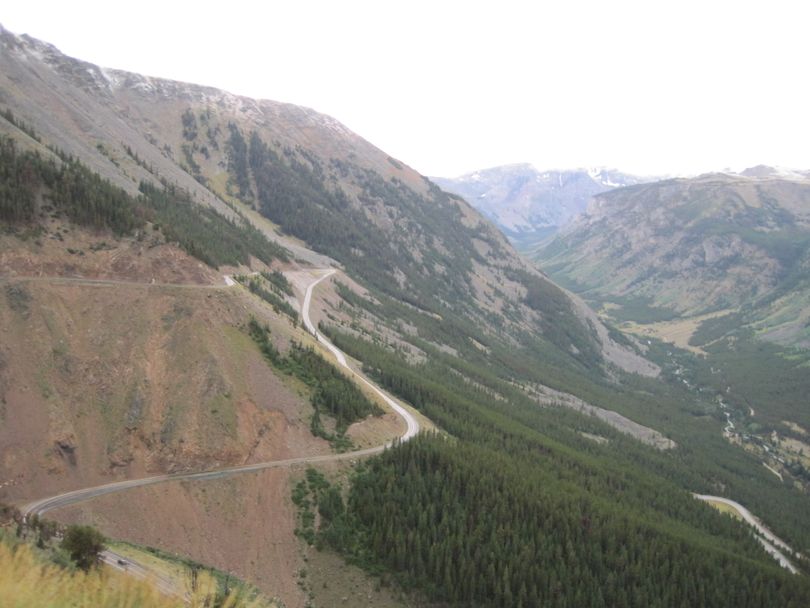A Path of Desire

I rested the side of my head on the cool glass of the small oval of the airplane window and gazed down at the ground below the wing. We were flying east, moving beyond the Cascades and toward the Rockies, covering hundreds of miles an hour.
Patchwork squares of gold and brown and green were stitched together across the landscape, rising and falling, rippling from one edge of the horizon to the other. Roads and highways dissected the pattern, connecting farms and towns and cities.
It all reminded me of a model train display, roads at right angles and tiny trees planted along fence lines and around boxy white farmhouses with driveways and walkways leading from the house to a barn or garage.
The plane followed a river, wide, winding and serpent-like, snaking between mountains and through canyons, twisting and turning, carving deeper into the landscape, bordered by a ribbon of green fed by the moisture.
From 36,000 feet above, I could see the bends and turns the river made as it rushed headlong toward the sea. It was like a giant living thing crawling across the earth.
But what interested me, was that from my view, I could see where the river had run before, before it had changed its course. Ghost canyons stretching across the grassland, no longer filled with water, often choked with homes and entire communities. There were faint scars on the crust of the earth, evidence that a river, like people, when left to its own, choses its own path. It wears away at the boundaries, carving, breaking and widening the road it wants to travel.
Just like us.
I thought of the river again later that week, as I rode up Montana’s Beartooth Highway, following switchback to switchback, circling up to the top. Looking back down at where we’d been, the ribbon of asphalt and concrete unfurled behind me. To my right, I could see the faint track etched into the steep hillside, made long ago, by pack animals threading their way up to the top.
The mountains were there first. But, like the river, the earliest people chose a desire path, the term landscape designers use for the shortcuts people and animals make. They wanted to get over the mountains so they made their own way. Later, trappers and miners and explorers followed that early trail. Then came the tourists, making another kind of pilgrimage.
In the summer of 1931, during the bleakest part of the depression, work on the ambitious project of building the Beartooth Highway began and in the span of four short years, primarily 1932 to 1936, it was done. A desire path that covers more than 60 miles and reaches a summit of more than 10,000 feet. Today, three quarters of a century later, the road still shines.
Standing at the summit, I looked up at the tall Montana sky already heavy with snow even on a late summer day. And I gazed over the edge of the plateau to the valley below. And, for a moment, I was filled with a fine sense of happiness.
There are roads and rivers and even invisible navigational routes in the sky that carry us to where others have been before. But occasionally, often when we least expect it, we find the courage and the freedom to create our own path of desire.
Cheryl-Anne Millsap is a freelance columnist for The Spokesman-Review. Her essays can be heard on Spokane Public Radio and on public radio stations across the country. She is the author of “Home Planet: A Life in Four Seasons” and can be reached at catmillsap@gmail.com